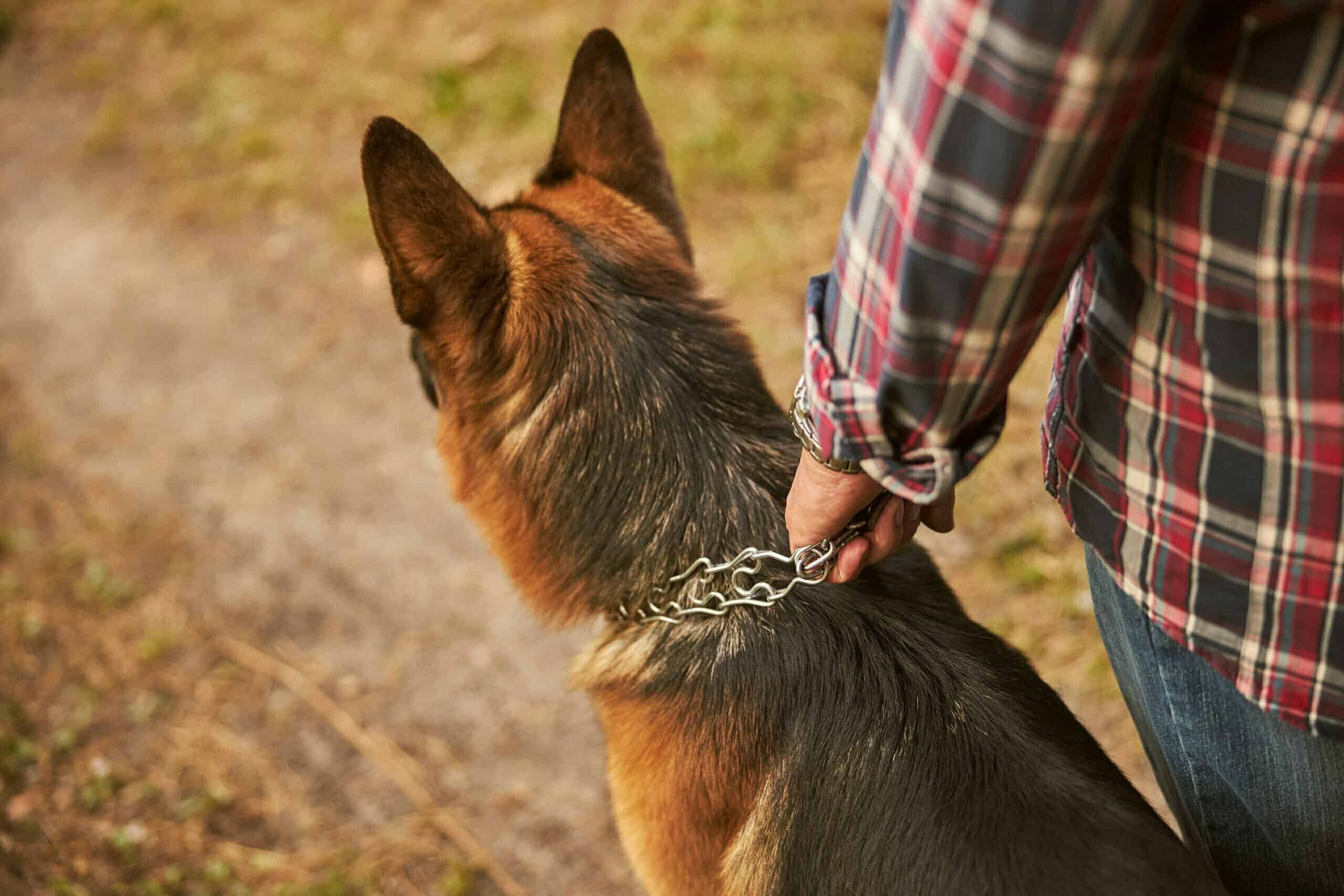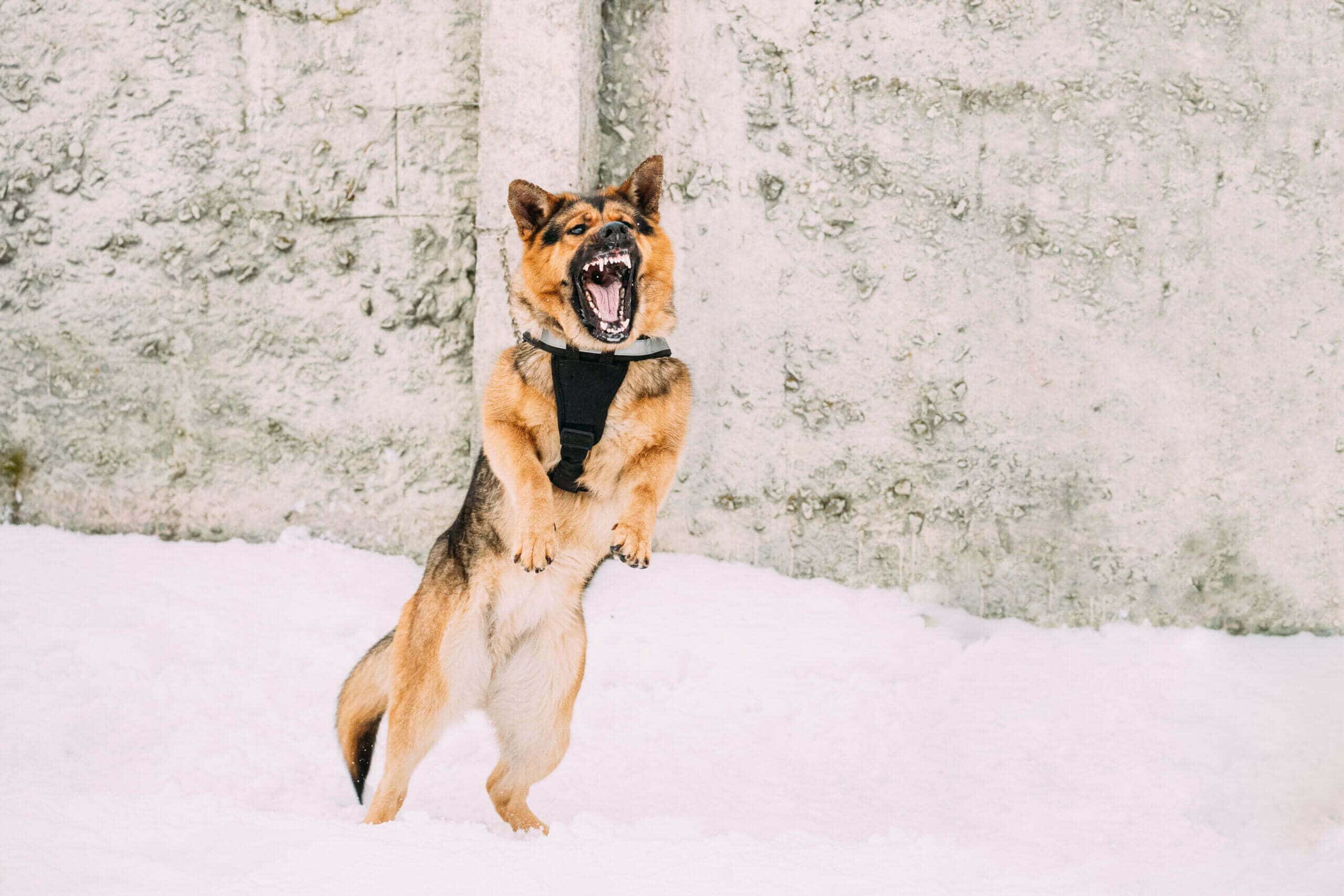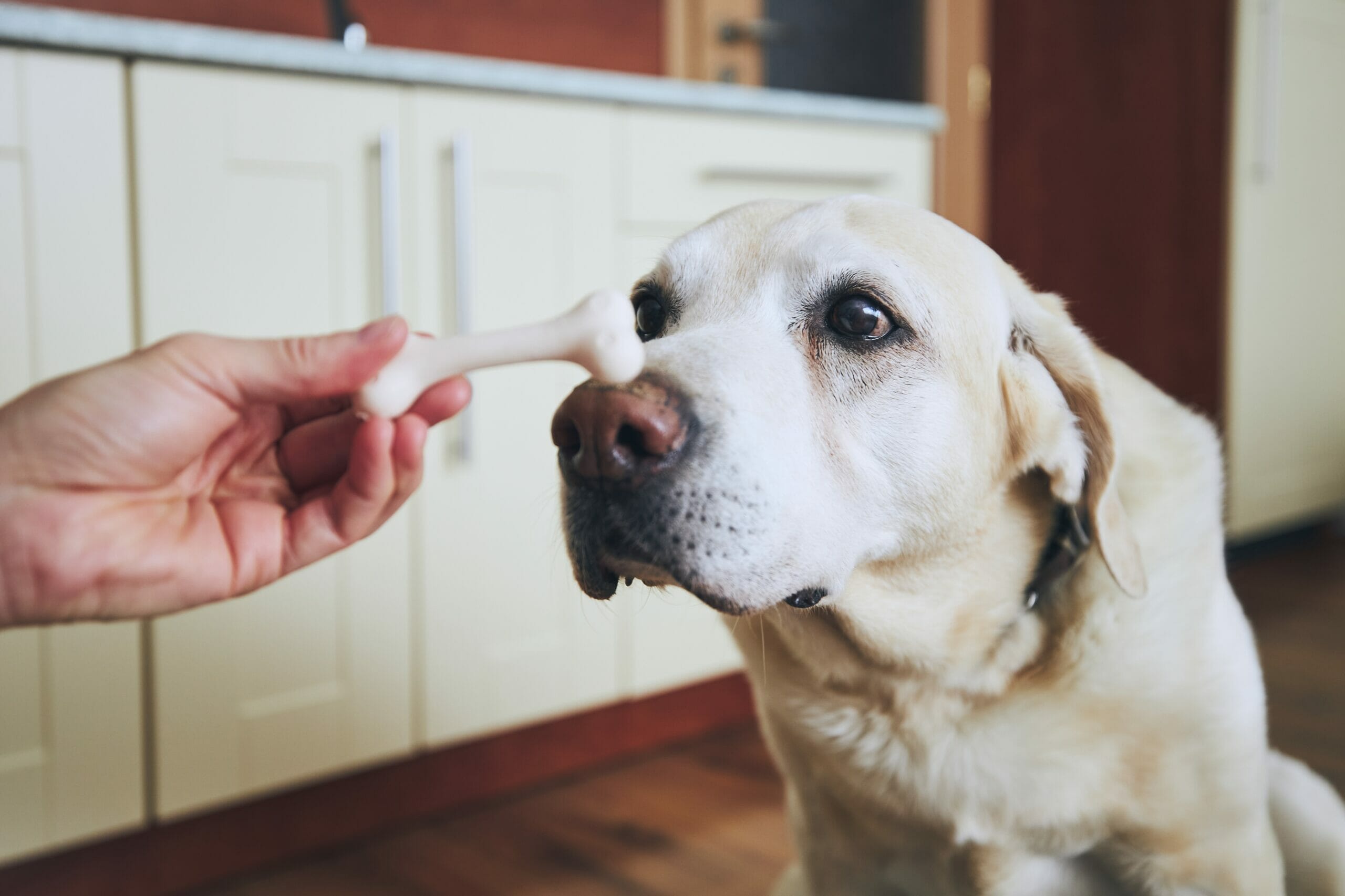What Is Barrier aggression in dogs? 5 tips to help barrier aggresion
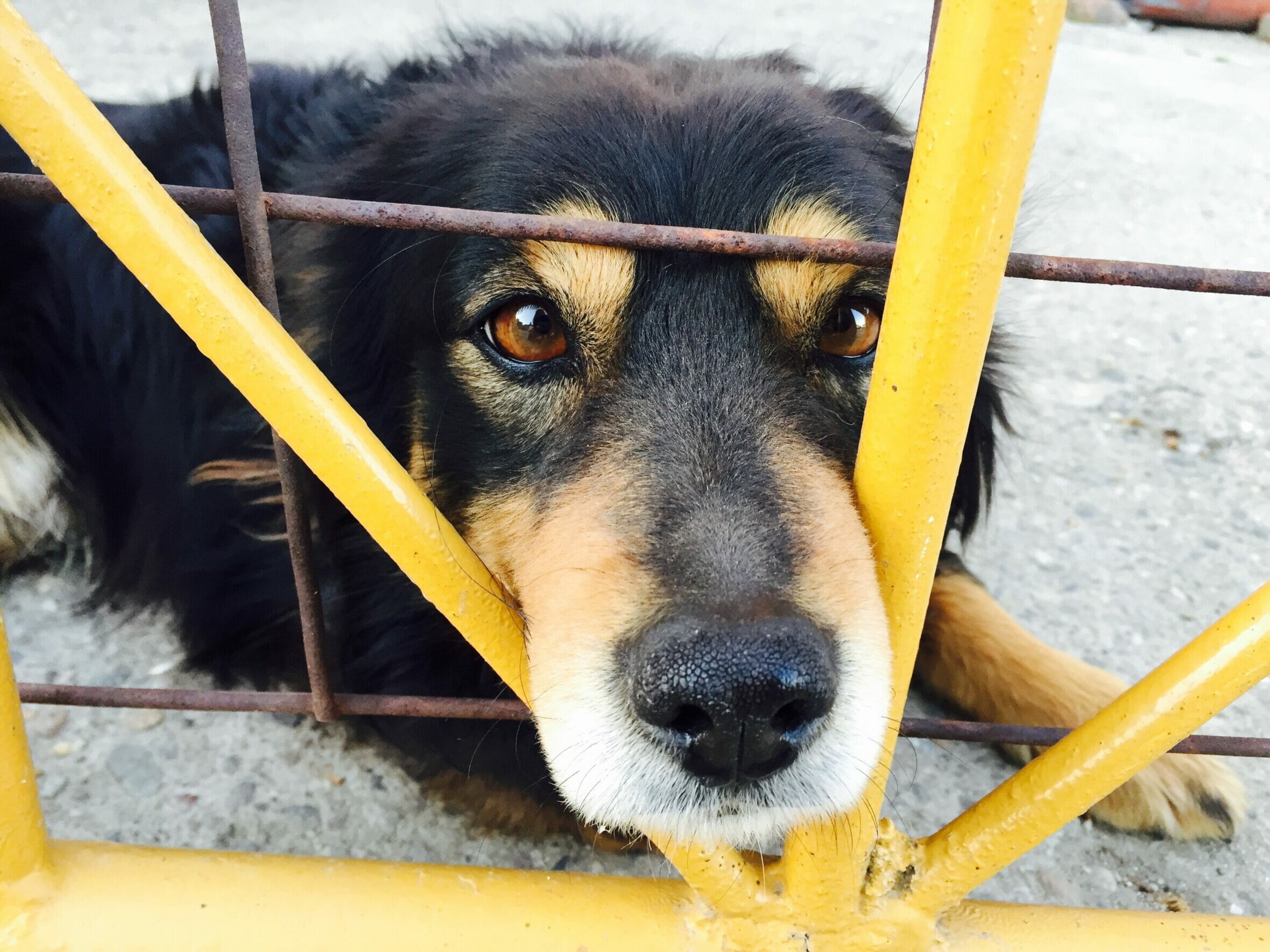
Dogs are often considered man’s best friend, and for good reason. They are loyal, loving, and provide us with unending companionship. However, sometimes dogs can exhibit unexpected behaviors that we may not be familiar with. One such behavior is barrier aggression. What is barrier aggression in dogs? And is it a bad thing? Let’s take a closer look.
What is barrier aggression in dogs?
Barrier aggression is a type of aggression shown by dogs who become aggressive when they are prevented from approaching or getting close to someone or something. This can happen when a dog is behind a fence, in a car, or on a leash. Dogs who are displaying barrier aggression may bark, growl, lunge, or snap at the person or animal they are trying to get to. In some cases, they may even try to jump over or break through the barrier that is preventing them from getting to their target.
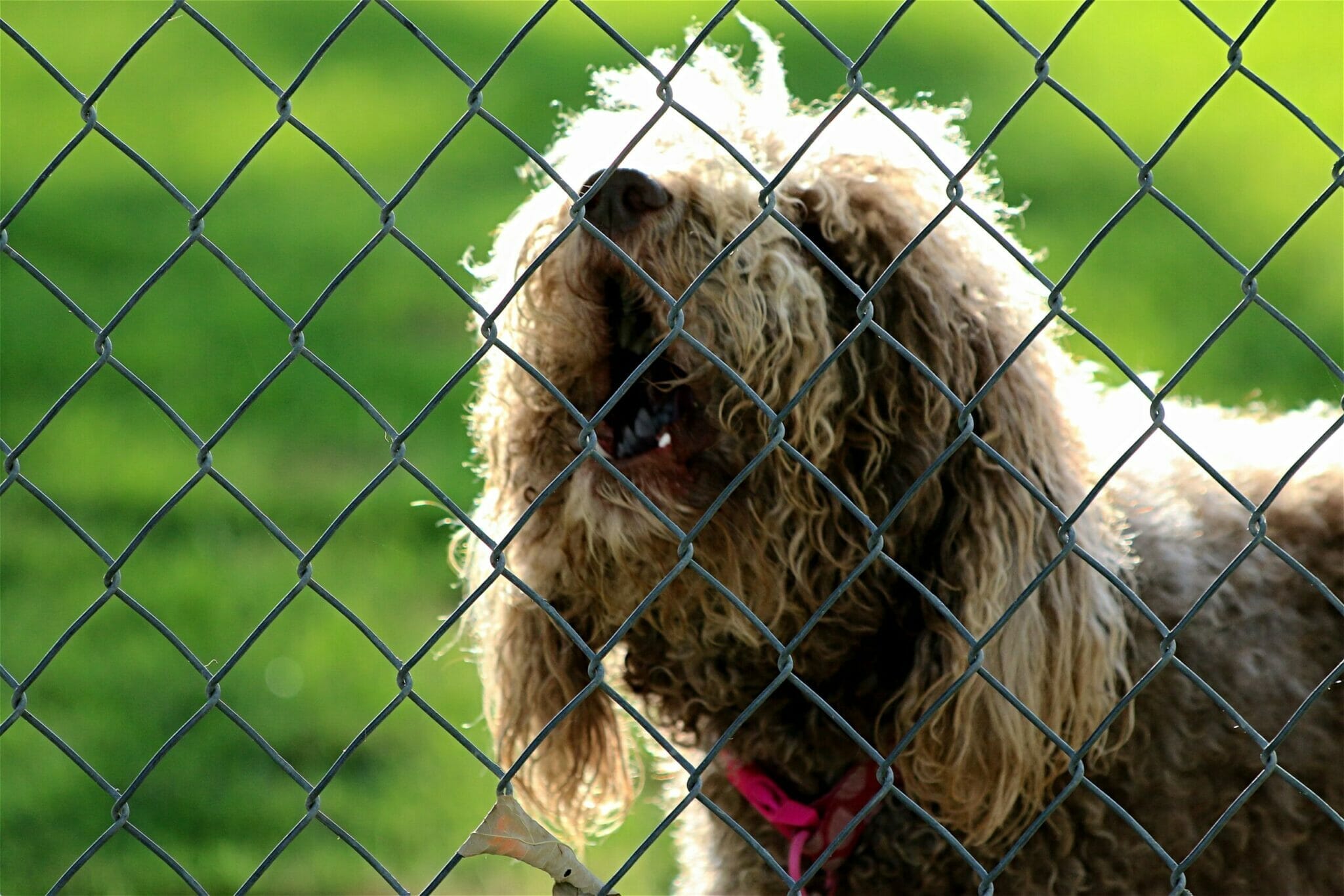
So, what causes barrier aggression?
Dogs are natural protectors of their homes and families. So, if they feel that someone or something is threatening their territory, they may become aggressive to defend it.
An obvious example of this would be a dog that becomes aggressive when someone tries to enter their home or yard. But it’s important to remember that dogs may also see things like cars, bicycles, and even people walking by as potential threats to their territory.
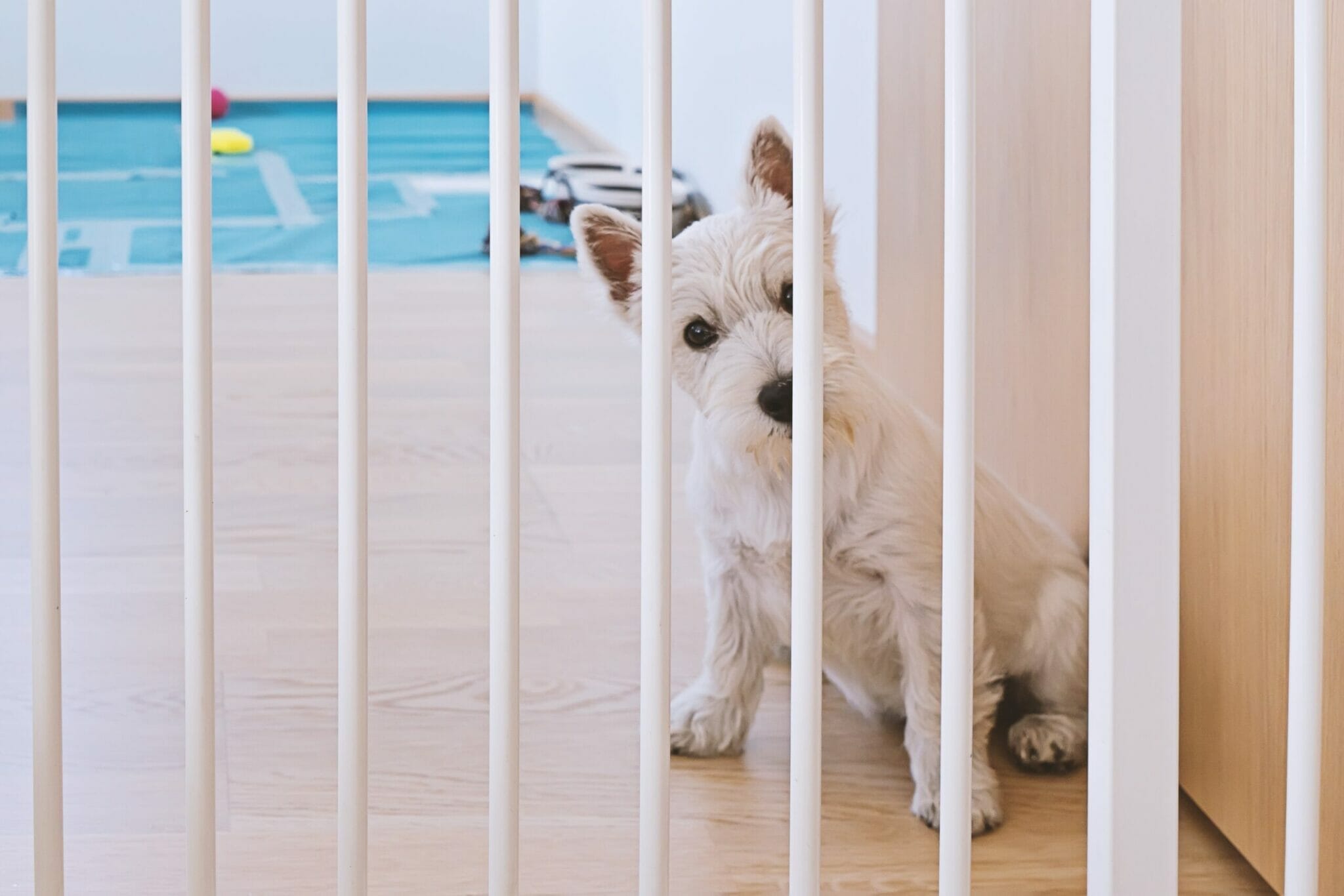
When is barrier aggression considered a problem?
You may think there is nothing wrong with a dog protecting their home or family. And in most cases, there is nothing to worry about.
However, barrier aggression can become a problem when it leads to aggressive behaviors like biting or attacking people that are in your circle. This means you cannot invite friends over, as your dog may attack them.
If you are struggling with barrier aggression in your dog, we have some tips for you.
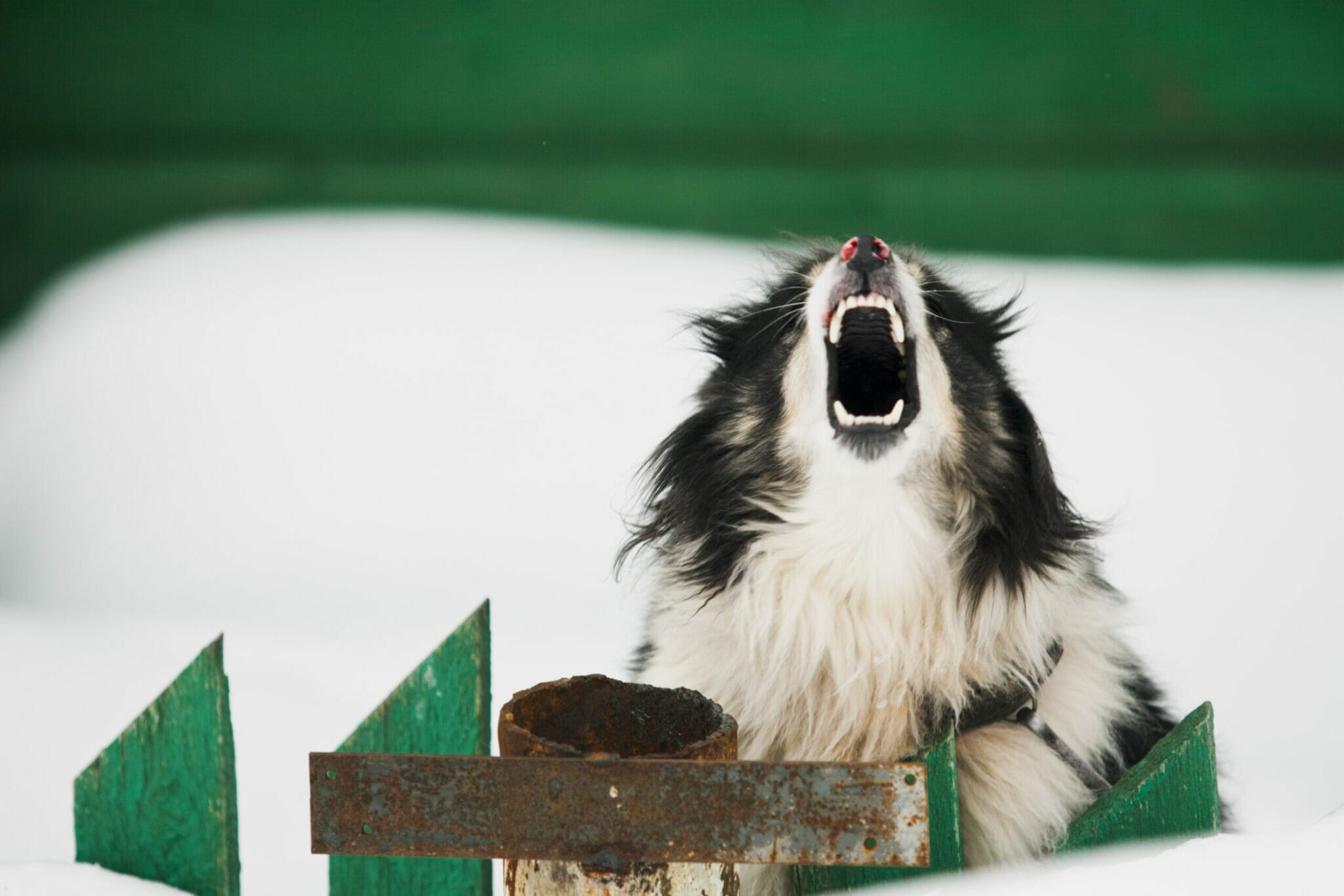
How do you fix barrier aggression in dogs?
Barrier aggression is a common problem for dog owners, but there are ways to fix it. Let’s take a situation where your dog is aggressive to your friend at home. Here is what you can do to learn good behavior.
- Stay close to your friend and give him/her dog treats.
- Let your friend drop a treat on the ground.
- Wait until your dog eats the treat.
- If your dog seems to calm down, let your friend give your dog another treat.
- The situation should already be calmed down and based on your dog’s behavior your friend can pet your dog.
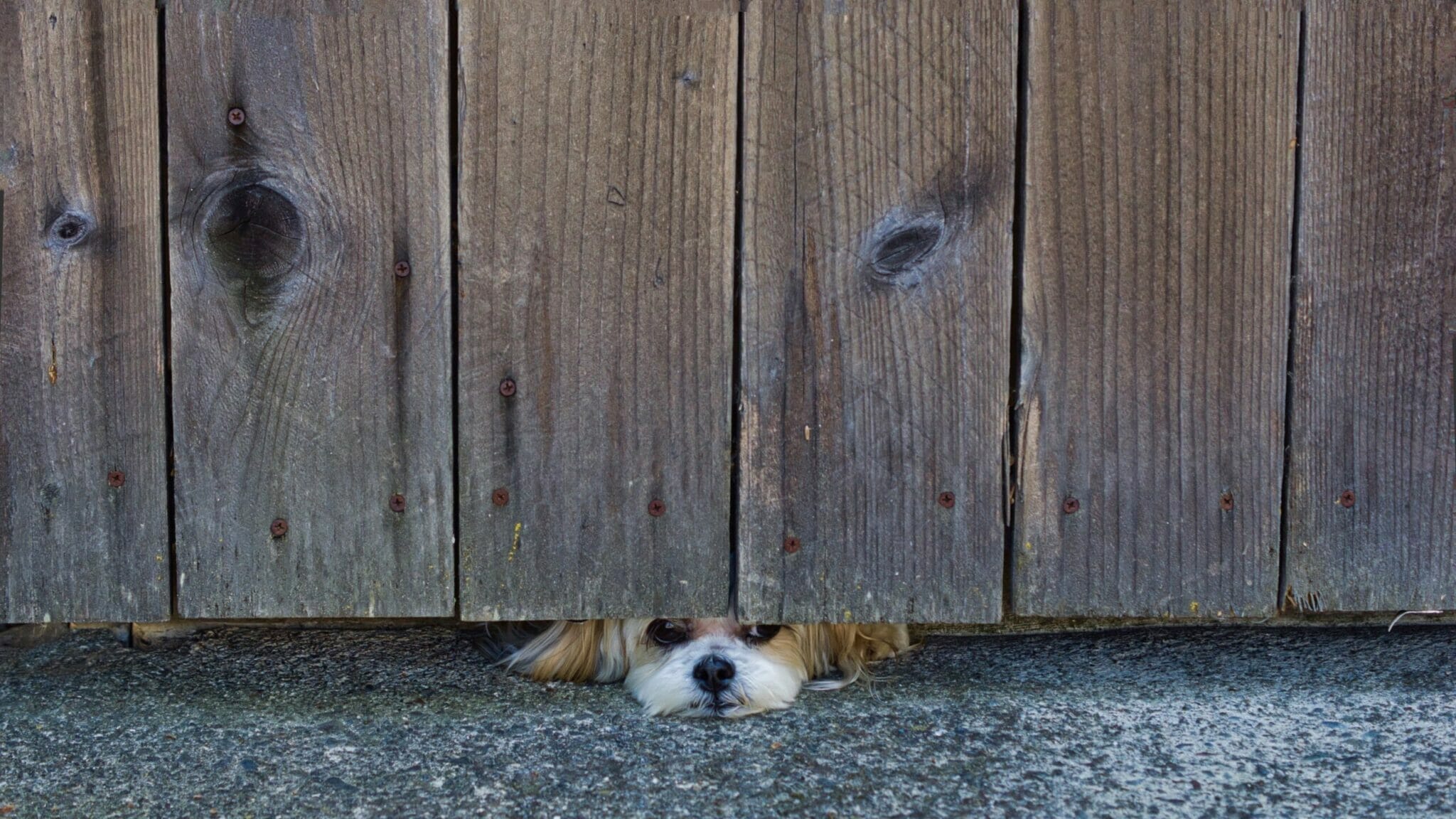
This system is purely based on positive reinforcement, which avoids creating any anxiety or stress in your dog. It’s important to remain calm during the process and to avoid any type of punishment, as this will only make the problem worse.
With enough repetition and patience, your dog will eventually learn that there is nothing to be aggressive about and that good things happen when people are around.
Additional tips for barrier aggression
1First of all, make sure your barrier is solid
If your dog is behind a fence, make sure the fence is tall enough and in good repair so that your dog cannot see or get to the people or animals they are barking at.
Or for instance, if your dog is in a car, be sure to keep the windows up and the doors locked so that they cannot get out and attack someone.
2Use conditional emotional response training
The idea of conditional emotional response training is to get the desired outcome based on a stimulus.
For instance, when your dog stops barking you can use a clicker (stimulus) and reward them with a treat. This way, your dog will associate the clicker with good behavior and a treat.
After enough practice, your dog will stop barking when he hears the clicker. Eventually, he will learn that the only way to get the clicker is to stop barking.
3Avoid punishment-based methods
Punishing your dog for their aggressive behaviors is not going to solve the problem and may even make it worse
Dogs who are punished for their aggression can become more anxious and stressed, which can lead to even more aggressive behaviors.
A better approach is to use positive reinforcement methods like the one mentioned above.
4Make sure your dog is getting enough exercise
Dogs who are cooped up all day with little to no exercise are more likely to become frustrated and aggressive. Be sure to give your dog plenty of opportunities to run, play, and burn off excess energy
You may also want to consider enrolling your dog in a dog sport or agility class as this can be a great way to tire them out both mentally and physically.
5Socialize your dog more
Dogs who are not well socialized are more likely to see strangers as a threat. Be sure to expose your dog to different people, places, and situations on a regular basis so that they can get used to them
This will help your dog become more confident and less likely to see people as a threat.
What if my dog’s barrier aggression is more severe?
If your dog’s barrier aggression is more severe, you may need to consult a professional trainer or behaviorist. They will be able to help you create a training plan that is specifically tailored to your dog’s needs
In some cases, medication may be necessary to help your dog relax and learn new behaviors. However, this should always be done under the guidance of a professional.
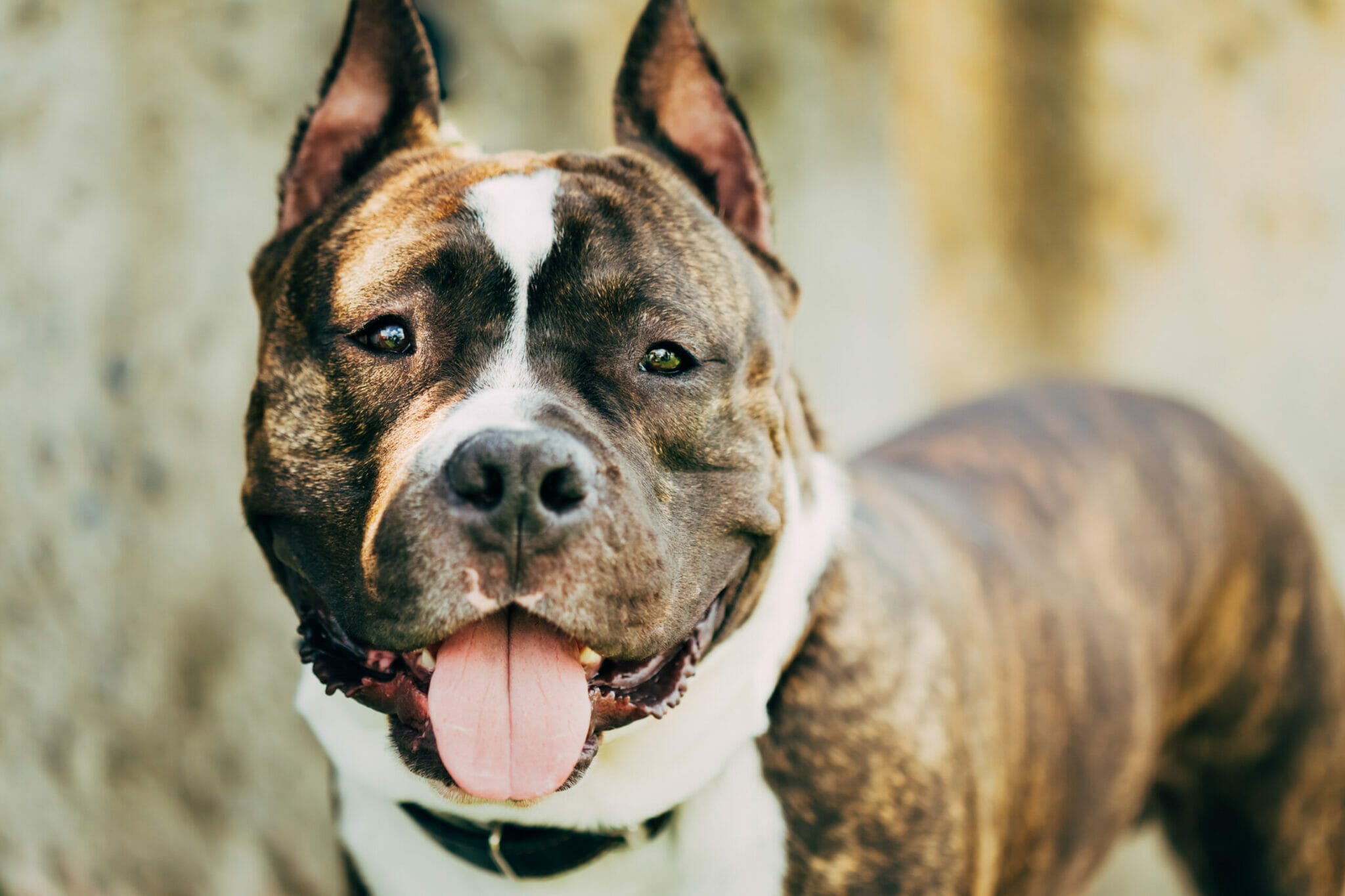
Final notes
Barrier aggression is a common problem in dogs but it is also one that can be successfully managed with the right approach. Be sure to avoid punishment-based methods, use positive reinforcement instead, and get professional help if necessary. With enough time and patience, your dog will learn that there is nothing to be aggressive about and that good things happen when people are around.
Additional Resources:
https://www.spcamhc.org/resources/dogs/eliminating-barrier-aggression
